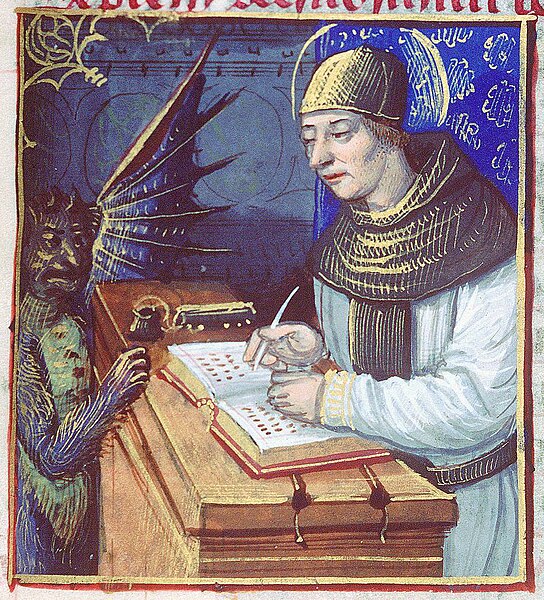Titivillus is a demon said to introduce errors into the work of scribes. The first reference to Titivillus by name occurred in Tractatus de Penitentia, c. 1285, by Johannes Galensis. Attribution has also been given to Caesarius of Heisterbach. Titivillus has also been described as collecting idle chat that occurs during church service, and mispronounced, mumbled or skipped words of the service, to take to Hell to be counted against the offenders.
14th century illustration of Titivillus at a scribe's desk
Saint John the Evangelist on Patmos by Hieronymus Bosch, 1505. It is believed that the devil on the lower right corner of the scene, with a human face and an insect body, is Titivillus. It appears Titivillus tries to grab and steal Saint John's ink bottle using a rake-like tool.
Representation of Titivillus on a wall painting in St. Michael with St. Mary's Church, Melbourne.
A scribe is a person who serves as a professional copyist, especially one who made copies of manuscripts before the invention of automatic printing.
Portrait of the Scribe Mir 'Abd Allah Katib in the Company of a Youth Burnishing Paper (Mughal Empire, ca. 1602)
Neo-Sumerian clay tablet with 24 columns on the front and back listing the names of almost 20,000 temple workers (2094–2047 BCE)
Early New Kingdom statue commemorating the scribe Minnakht ("Strength of Min"), showing how ancient scribes worked seated on the floor with the papyrus on their lap
Ancient Egyptian scribe's palette with five depressions for pigments and four styli







